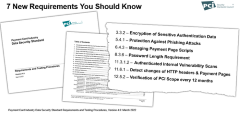

How to Accept Credit Card Payments Over the Phone
Use a Virtual Terminal and Adhere to Certain Security Measures
Setting up a credit card reader at the point of sale is just one cost of doing business. But what happens if you want to be able to accept credit card payments outside the point of sale? Many types of businesses, from restaurants to healthcare providers, accept credit card payments over the phone. It offers your customers another convenient option when they can’t be physically present.
Methods for Accepting a Customer’s Credit Card Over the Phone
- Manually keying in card numbers on your credit card terminal: While on the phone with your customer, ask your customer to read off the card number, expiration date and CSV code while you type the information into your credit card terminal at the point of sale.
- Manually keying in card numbers on your mobile credit card processing application: Instead of a payment terminal, you can use a mobile app (PayPal, Square, SumUp) on your phone to accept credit cards. Enter the customer’s credit card information into the mobile app provided by your payment processor.
- Manually keying in card information using a virtual terminal: Finally, you can key in a customer’s card with a virtual terminal, which is essentially a web-based credit card processing application. Virtual terminals sometimes allow you to bring down your costs of accepting credit cards over the phone with what is known as Level 3 processing. By capturing additional information to send to Visa and Mastercard, you can get lower interchange rates for phone transactions.
How to Take Payments Over the Phone with Payway’s Virtual Terminal
A virtual terminal is a software application that allows you to manually enter payment information and process transactions. It can be accessed through a web browser on your computer or mobile device.
To accept credit card payments over the phone using Payway, you will need a virtual terminal. Payway’s virtual terminal can be used on a mobile device or desktop, so long as you maintain internet access. When a customer calls in to place an order, you simply launch the virtual terminal and key in the customer’s credit card information, billing address and shipping address.
Payway partners with VoicePort and Chatterbox to offer additional benefits such as secure automated payment telephone capability. This allows your customers to enter their credit card information either by speaking the information into their phone while your company rep is put on hold, or via their phone’s keypad rather than reading it out to a member on your team. This capability ensures PCI DSS compliance and eliminates the need to store sensitive card details.
What Does it Cost to Accept Credit Cards Over the Phone?
Accepting credit cards over the phone is less secure than accepting a card physically at the point of sale. To account for this higher risk of fraud, you will be charged higher rates and per-transaction fees for card-not-present transactions, including keying in card information over the phone.
Exactly what you will pay per transaction depends on your payment processor and pricing model. Most payment processors charge one bundled rate for all transactions, regardless of how the transaction is made. Payway, on the other hand, uses a cost-plus pricing model. We pass through the interchange rate rather than bundling it in. With cost-plus pricing, you’ll know exactly what you’re paying per transaction. Generally, though, accepting credit cards over the phone is going to cost you more than accepting a physical card with a credit card reader.
How can I prevent fraud when taking payments over the phone?
When a customer pays with a credit or debit card over the phone, there is always the risk that the customer is not the authorized card user. It’s this risk that explains why card-not-present transactions carry a higher payment processing fee. This includes when credit card payments are manually keyed-in for over the phone transactions. Preventing card-not-present fraud is a proactive operation. You must take every precaution for security and verification for any CNP transactions.
- When taking payments, it’s wise to ask for extra details beyond the card number, such as the CV2 number, expiration date, full cardholder name or billing address. Ask for phone number and billing address. Consider calling back the cardholder to confirm the purchase.
- It is not a bad idea to keep an internal “gray list.” This is a record of chargebacks or disputes by delivery address. If you have repeated problems at a particular address and suspect fraud, you may want to discuss this with relevant card issuers before processing more transactions there.
Accepting Payment Over the Phone Has its Pros and Cons
If you’re invoicing customers via mail, you should accept at least some credit cards over the phone. Many customers do not want to mail out checks and want that added convenience of paying their bill over the phone. This benefits both your business and your customer. If you own a delivery-based businesses, customers often expect to complete an order from the convenience of their own home. Offering your customers the option to pay by card over the phone is necessary good for business, but it also carries a higher risk of fraud. Implementing best practices and policies to ensure your business doesn’t unknowingly engage in fraudulent transactions is an absolute must when you begin accepting cards over the phone.
In many cases, business owners are caught in between meeting customer demand and ensuring secure payment methods. Unfortunately, not every transaction is airtight. But your customers expect your business to support their preferred payment method. To do so, take the appropriate precautions and ensure your staff always adheres to the policies you’ve established.


